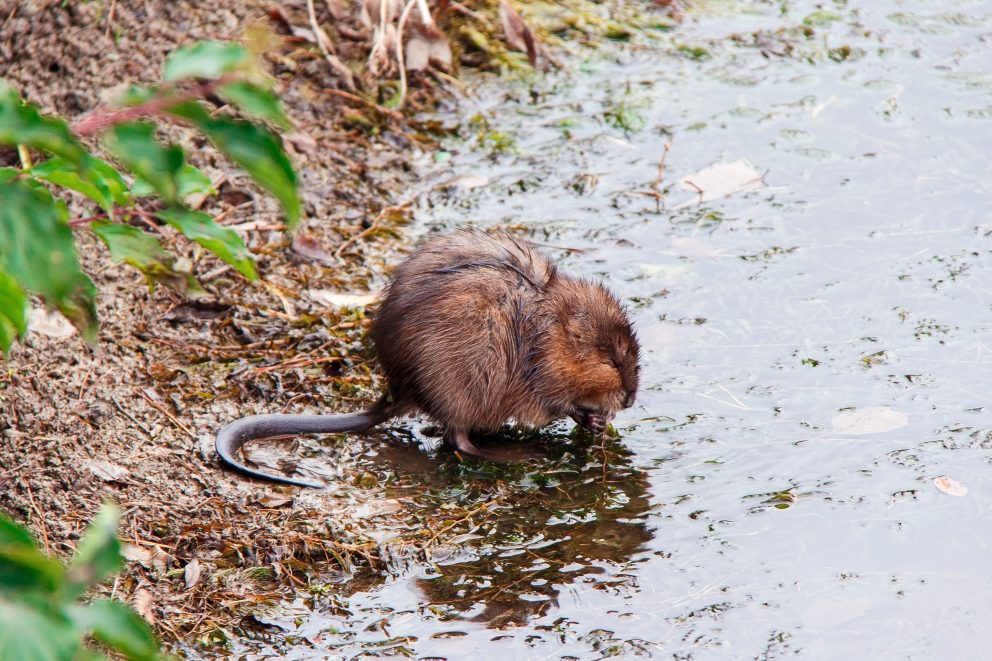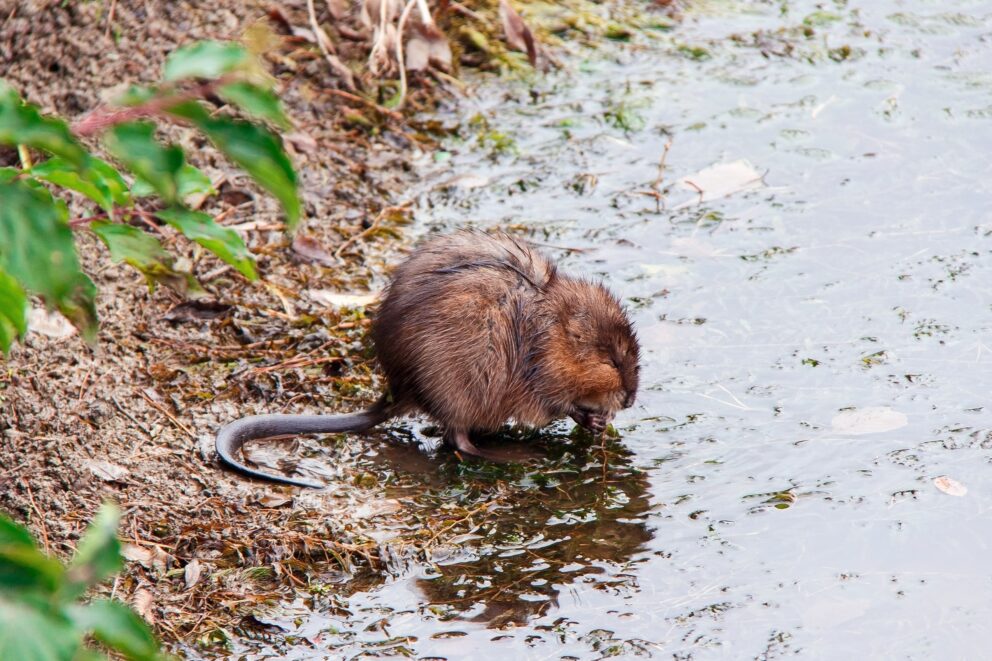- SCIENTIFIC NAME
- Ondatra zibethicus
- CLASSIFICATION
- Mammal
- LIFE SPAN
- 3-4 Years
- SIZE
- 10-14” | 2-4lbs
- STATE CONSERVATION STATUS
-
- State Protected
- FEDERAL CONSERVATION STATUS
- Least Concern
- GAME STATUS
- Furbearer
- GAME TYPE
- Furbearer
- Washoe
- Humboldt
- Pershing
- Churchill
- Mineral
- Lyon
- Douglas
- Carson City
- Storey
- Elko
- Lander
- Eureka
- White Pine
- Esmeralda
- Nye
- Lincoln
- Clark
Habitat & Range
The Muskrat is an aquatic rodent who is commonly found throughout Nevada’s waterways. They habituate wetland areas with ample vegetation where they can construct their conical-shaped houses and bank dens out of plant matter.
- Lakes and reservoirs
- Marsh
- Rivers and streams
Threats
- Disease
- Predation
Natural History
Muskrats are nocturnal mammals that do not hibernate, and need to consume fresh vegetation daily to survive. They use their specialized front teeth to chew down plants like cattails, sedges, and pond weed. They will also occasionally consume crawfish, snails, and other small fish. Outside of breeding, Muskrats exhibit aggressive behavior against others of their species. Depending on available resources, Muskrats can have up to three litters of a maximum of ten young every year. Muskrats are able to live on their own as early as a month after birth!
Fun Facts














